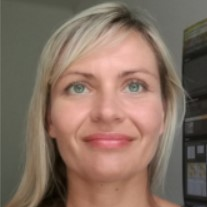Advanced Spectroscopy-Based Technologies in Soil Monitoring
A special issue of Applied Sciences (ISSN 2076-3417). This special issue belongs to the section "Earth Sciences".
Deadline for manuscript submissions: closed (31 December 2020) | Viewed by 2860
Special Issue Editors
Interests: imaging spectroscopy; mineral spectroscopy; environmental monitoring; optical and thermal remote sensing; raw materials
Special Issues, Collections and Topics in MDPI journals
Interests: applied spectroscopy; materials science; sustainable materials; materials ageing
Special Issues, Collections and Topics in MDPI journals
Special Issue Information
Dear Colleagues,
Soil contamination is unfortunately a global problem and with an increasing population growth will become one of the biggest challenges to be solved in the future. Due to the fact that soil contaminations include a wide range of natural, synthetic metallic, and organic compounds, and minerals present in a large degree of spatial variations, one of the barriers we face today is the lack of cost-effective and operational approaches to assess soil properties. Using modern distance methods such as proximal remote sensing and imaging spectroscopy is quite possibly the way to go to improve the cost efficiency of currently used methods to determine soil geochemical property as well as concepts used for sampling strategies.
Hence, in this Special Issue, we are looking for novel solutions and approaches that open up the possibilities for quantitative prediction of diverse soil parameters in the lab as well as in a real environment. In particular, we are looking for such solutions allowing synergic use of spectroscopic data covering different spectral regions (e.g., VNIR/SWIR and LWIR) and new techniques achieving higher model accuracy including but not limited to the topics as follows:
- Synergic use of optical and thermal spectroscopic data for quantitative prediction of soil parameters/constituents;
- Moving from lab to real environment: spectral and spatial upscaling, using different platforms;
- New modeling approaches especially those allowing global soil monitoring;
- New solutions to improve soil sampling strategy;
- Potential of state-of-the art sensors and satellite systems for soil monitoring;
- Potential of future sensors and satellite systems for soil monitoring.
Dr. Veronika Kopačková-Strnadová
Dr. Mario Marchetti
Guest Editors
Manuscript Submission Information
Manuscripts should be submitted online at www.mdpi.com by registering and logging in to this website. Once you are registered, click here to go to the submission form. Manuscripts can be submitted until the deadline. All submissions that pass pre-check are peer-reviewed. Accepted papers will be published continuously in the journal (as soon as accepted) and will be listed together on the special issue website. Research articles, review articles as well as short communications are invited. For planned papers, a title and short abstract (about 100 words) can be sent to the Editorial Office for announcement on this website.
Submitted manuscripts should not have been published previously, nor be under consideration for publication elsewhere (except conference proceedings papers). All manuscripts are thoroughly refereed through a single-blind peer-review process. A guide for authors and other relevant information for submission of manuscripts is available on the Instructions for Authors page. Applied Sciences is an international peer-reviewed open access semimonthly journal published by MDPI.
Please visit the Instructions for Authors page before submitting a manuscript. The Article Processing Charge (APC) for publication in this open access journal is 2400 CHF (Swiss Francs). Submitted papers should be well formatted and use good English. Authors may use MDPI's English editing service prior to publication or during author revisions.
Keywords
- Soil monitoring
- Soil geochemical property
- Soil degradation and contamination
- Optical and thermal remote sensing
- Soil property modeling
- Spectral and spatial upscaling
- Global soil monitoring
- Imaging spectroscopy






